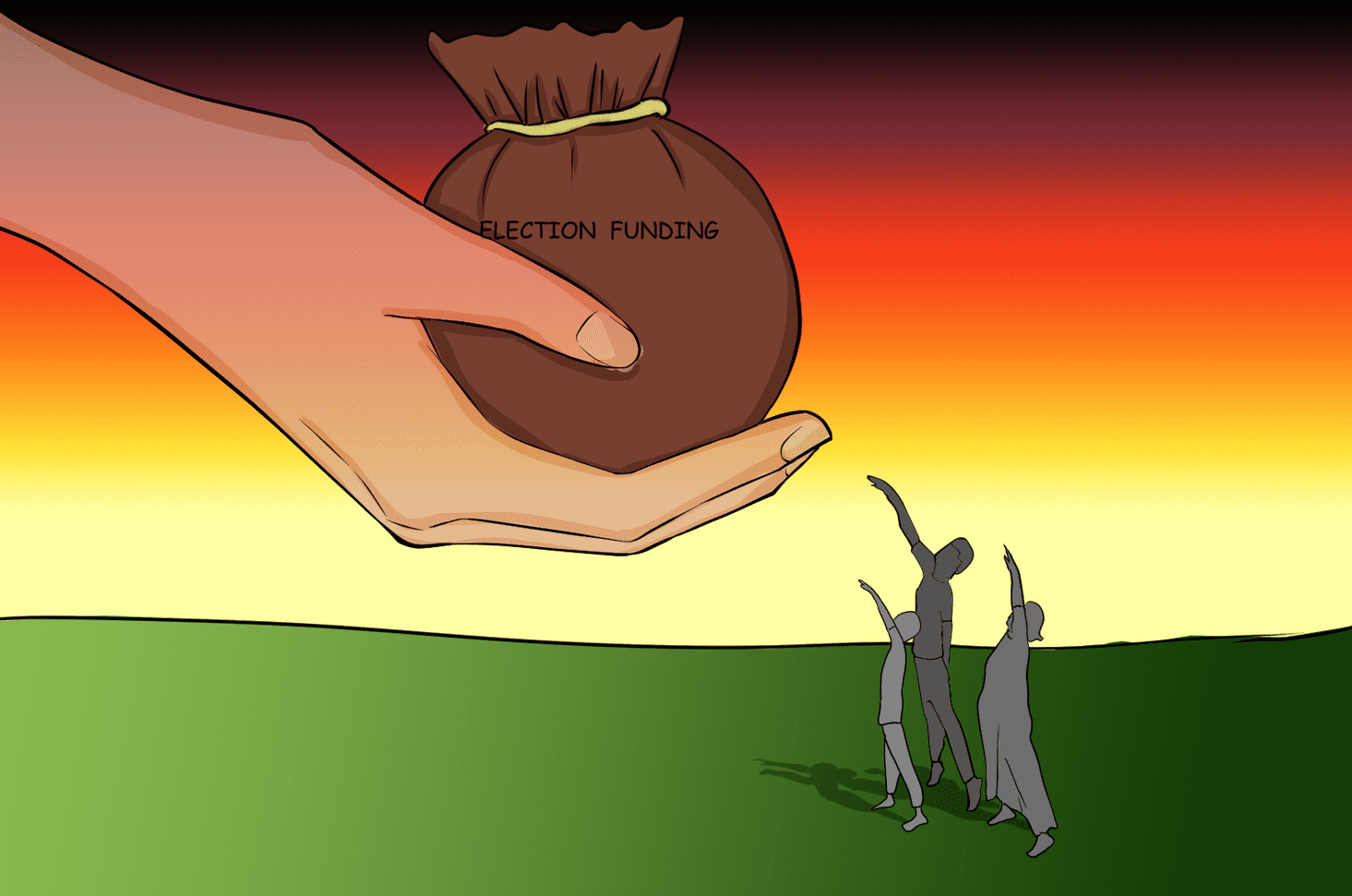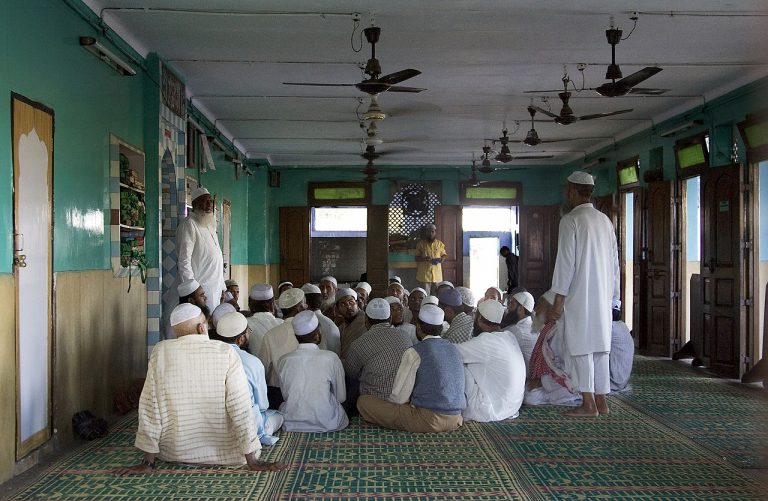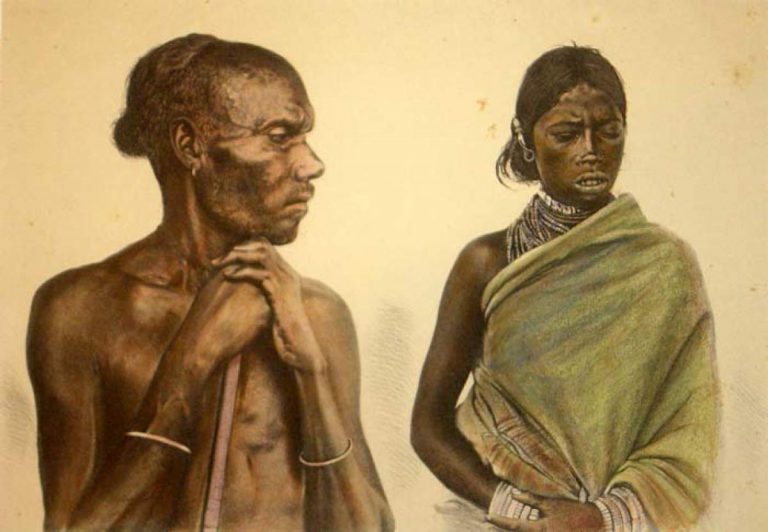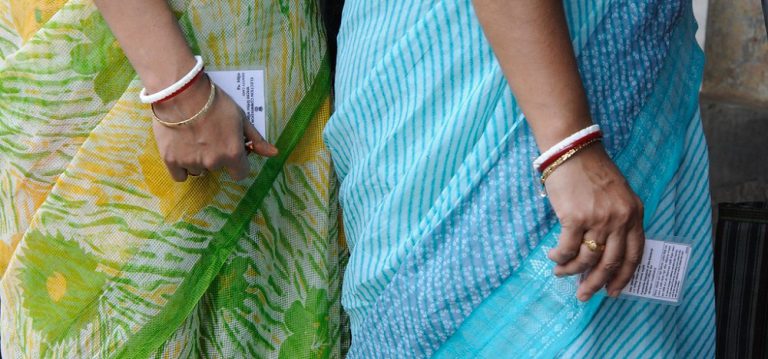The economics of Indian electoral politics – An Introduction
Sai is a member, Core Team and also the Managing Editor at The ArmChair Journal
Like most Indians, I grew up watching movies that talked about how corrupt the Indian electoral political system was and how thousands of crores would flow freely during the election weeks. I also grew up reading some of the stories that would be published here and there when the police would make a discovery. But there was nothing that was credible and honest. And that pushed me into researching all of this.
As per the official statements submitted by the national parties on their yearly election expenditures for 2019, just the 7 national parties spent greater than Rs. 3700 crores. There are 543 constituencies, from which representatives are elected to the Indian Parliament, which meant that, on an average, a little less than Rs. 7 crores were spent in each constituency – by just these parties alone. But this is just a small percentage of the actual spending. It is important to note that the person fighting the elections is responsible for arranging their own funds. So, where does all this money go, and from where does all this money come from, the pros and cons of having a system such as this, and the other ways to fight elections.
The price of electoral democracy
I’ve always believed in every coin having two sides, and democracy is no exception. But, for a long time, I just knew the positives and remained blind to the costs of a democracy. My commentary here is not to critique the rights and wrongs of a democracy but to talk about its fuzzy and unclear aspects, especially Indian democracy. It’s not just a logistical nightmare to plan for the Indian elections, but also a financial one too. In the year 2019, the Election Commission of India, the body responsible for conducting all the elections in India, spent Rs. 3870 crores on conducting just the central elections. As already seen above, only the 6 national parties spent more than Rs. 1500 crores. But all of this does not sum up to even 10% of the total election expenditure. These expenses are just to ensure the elections. The candidates have to shell out money from their own pockets to fight the elections. And the limit for a candidate’s election expenditure in a Parliamentary constituency has to be within Rs. 50 lakhs to Rs. 70 lakhs, the details of which must be submitted to the ECI after the elections.
To understand the problem, let’s do some simple math. So, there are 543 constituencies, and even if we averaged that, there are 10 people who are spending the maximum limit of Rs. 70 lakhs, the total expenses should not even cross Rs. 3801 crores. Yet, various reports consistently peg the figure, as per very conservative estimates, between a whopping Rs. 55,000 – Rs. 60,000 crores, implying more than Rs. 100 crores was spent in every constituency. All this apart from the Rs. 3500 worth cash, gold, drugs, alcohol, etc. that were seized by the ECI in the lead up to these elections. Imagine, the confiscated property was the ECI budget to conduct these elections!!! The budget of the Indian elections’ pales in comparison to the budget of the Avengers series, and yet the Indian elections have much better drama and actors.
Sources of electoral funding for parties and candidates
While the candidates are almost always expected to fight their elections from their own pockets, this means that these candidates are expected to find ways to fund their causes. While many candidates gamble their entire property into this, most find innovative ways to raise money or resources. In more recent times, crowd-sourcing for poor candidates is slowly becoming the mainstream. While some use the already existing crowdsourcing platforms or rely on Facebook shares and the strength of the network of supporters on social media, new ones like ourdemocracy.in have come up solely focusing on this cause. So far, some of the success stories here are of Jignesh Mewani from Gujarat, CPIs Kanhaiya Kumar, AAP’s Atishi Marlena, among many others. However, these being recent technological interventions are not yet accessible for all. So, generally, most candidates rely on their supporters or party advocates – who typically are successful business people in the local areas for money or resources. Some donate cash, some others arrange the grounds for rallies, some take responsibility for food or sound and light systems, others provide free or discounted petrol and so on. But everything comes at a cost; it might not be upfront; it will accrue, however, until the concerned candidate is in position and return favors are a duty. When I was a child, I wondered what the elders talked so much about politics, and I assumed that they were always talking about the best candidate. Much later, I realized that a majority of the conversations of local politics at the tea stalls or office rooms revolved around these stories.
And, no wonder, this adds to the economic discrimination of Indian politics – poor people are outcasts in this Indian electoral setup. In the 2019 Lok Sabha elections, the median wealth (that the candidate themselves declare) of the candidates were Rs. 25 lakhs, while the median of an Indian was less than Rs. 90,000 . The chasm is more pronounced between the parties, too; the median wealth of a Congress candidate was Rs. 4.4 crores and that of a BJP candidate stood at Rs. 3.5 crores. Literally pulling myself away from writing more, I’ll conclude this part by saying that even these numbers are an understatement – after all, they’re all self-declared by the candidates themselves; in all probability, they’ve all been disparaged, undervalued, and under-reported.
For political parties, most of their incomes are from donations, which can be of 2 types, basis donor identity – donations from known sources and donations from unknown sources. As per mandates, every donation greater than Rs. 20000, the source must be made public in their annual statements to the ECI. All donations greater than Rs. 20000 fall under the known sources and donations lesser than Rs. 20000 and electoral bonds come under unknown donations. Of the total, a majority of these donations fall into the unknown sources’ category.
Corporate donations form a substantial share of the total donations (both known and unknown sources), and are also highly skewed. The amounts are generally transferred through individuals, bonds, trusts, industry associations, companies, or groups and are bound by various restrictions of the Companies Act and Representation of Peoples’ Act. In 1969, under the Indira Gandhi rule, the section in the Companies Act responsible for legalizing these donations was deleted, making such transfers illegal. But there was a growing pressure on these corporations to donate, and they continued to, in spite of the immense risk, which led to an era of what was called ‘Briefcase politics.’
Following the LPG reforms, inspired from the German model of financing political parties, Indian companies also began to test out a new concept called ‘Electoral Trusts.’ Electoral Trusts have been major contributors for a long time now and are slowly making way for the freshly introduced Electoral Bonds. Electoral Trusts are organizations (not for profit) set up solely for the purpose of distributing funds they receive to the concerned political parties and never to earn profits or benefit the members of the trusts. Some of India’s largest and most influential brands and organizations like Bharti Airtel, Jindal Steel, Tata Sons, Hero, DLF, etc. contribute crores of rupees to different electoral trusts, which in turn donate to various parties, basis an established formula agreed by the concerned trust. While the idea existed for some time in the Indian political ground, it wasn’t until 2013 that it received legal backing and approval. Following 2013, hundreds of crores have been routed through these Trusts. The richest Trust has been the Satya Electoral Trust, renamed as Prudent Electoral Trust, backed by some heavyweights like Bharti Airtel, DLF, Hero, Jindal Steel, etc. which was responsible for more than Rs. 900 crores. As we can see, there has been a ballooning of funds from these Trusts post-2013, but soon they will also run out of practice due to the new reforms that introduced Electoral Bills in 2018. Of the Rs. 1083 crores that these Trusts handled since 2013, 84% have been routed through Prudent Electoral Trusts. Here’s a short representation of that.

These bonds not just offer anonymity of the trusts but also make it more convenient to donate, without the hassle of creating and registering a new Trust, etc. These bonds can be purchased at select branches of the State Bank of India (SBI) in defined cycles (12 have taken place till now). The bonds so purchased could be donated to any party (this means, from the bond, neither the party can be known, nor the donor), which must necessarily redeem these bonds within 15 days of issue by the bank. If not redeemed within this window, the money will be transferred to the Prime Minister’s National Relief Fund (PMNRF), which has already seen an inflow of more than Rs. 20 crores until October of 2019. Electoral bonds made it much simpler to contribute money and seem to have become a popular choice in such a short span of time – bonds worth Rs. 6000 crores were sold by SBI, in less than 2 years.
The quantum of incomes of a party vary basis the upcoming elections. For e.g., a party that is confined to a particular state like the YSRCP in Andhra Pradesh would receive higher amounts (generally 50% higher than preceding years) in the years elections arrive (both General, as well as state elections). And National parties receive their peak inflows during the years of General elections, or major, multiple state elections. However, post the introduction of electoral bonds, the parties (both national and state-specific) have received record inflows. In a graphical representation of my analysis of the 7 national parties that have submitted their audited financial statements to the ECI (Election Commission of India) across all the years under consideration, we can clearly see that, on average, all the national parties witnessed a doubling of their incomes. There are 3 outliers in the graph, which I’ve been unable to appropriately represent in the graph: BSP, in 2012-2013, had witnessed an increase of 873%; in 2018-2019, NCP and AITC had recorded increases of 474% and a stunning 3626% respectively. All other numbers remain consistent, without the effect of these deviations, including the totals. Also, the data callouts are averages across parties, and I’ve differentiated the general election years by placing data callouts at the top.

The 7 National parties were not the only beneficiaries of the electoral bonds; many of the regional parties, in whose state’s elections were announced, witnessed an abnormal surge in their fortunes. For the Financial Year 2018-2019, Telangana Rashtra Samiti (TRS) in Telangana, which went into state polls in December 2018, saw its total income increase 8 times from the previous year, Biju Janata Dal’s income (BJD), which participated in the 2019 Odisha state elections increased more than 16 times, Telugu Desam Party (TDP) and Yuvajana Sramika Rythu Congress Party (YSRCP), which fought the Andhra Pradesh elections of 2019, saw their total incomes rise 10 fold and 17 fold respectively, as noted in the graph above. While the onus of the surge cannot be attributed only to electoral bonds, they have been a driving force, though.
The outflows
In an analysis of the expenditures of National parties across two years (one being an election year and the other being a non-election year), the employee expenses and administrative expenses have devoured the most of the expenses. What is interesting is that there are neither mentions about the number of salaried employees or careers pages in any of their webpages, etc., nor are their submissions to the ECI showing the breakup. And, my RTIs went unanswered too. As we’ve already seen above, incomes increase during election years, election expenditure in proportion to the total expenditure also increases, and because employee and administration related expenses remain stable across years in absolute terms, they increase in proportion during non-election years – simply put, employee costs, administration and operational expenditures and finance-related expenses are similar to fixed costs, whose increase across years maintains some consistency, while election expenditure is variable, depending on the elections these parties participate in.

When the incomes of a given year exceed the total expenditures in that year, the surplus so formed is transferred to a General Fund or Corpus Fund that each of these parties maintains. The reserves so built up would be dipped into during years when election expenditures would exceed the incomes. Up to the financial year ending 2019, the 7 national parties have built up reserves exceeding a staggering Rs. 5000 crores, with BJP having almost Rs. 2900 crores saved up.
What are the issues?
There are two fundamental issues that plague here: inadequate funding to honest, genuine players and rampant corruption and misrepresentation of data. Let’s go through it one by one. By inadequate funding to honest, genuine players, we must understand that these players are almost out of the race even before it begins. Analysis shows a correlation between money and receiving a party ticket and even winning, which shows that parties are growing increasingly dependent on rich candidates. In a simple analysis from the data published by Association for Democratic Reforms (ADR), 30% of the MPs in the 2004 Parliament were crorepatis (self-declared wealth exceeding Rs. 1 crore), which has now become almost 88%. Almost 60% of the candidates who fought the 2019 general elections had self-declared wealth less than Rs. 50 lakhs, and just 29% percent of them were crorepatis. Yet, the winnings turn the tables upside down – these 29% went on to dominate and occupy 88% of the Parliament. The big question we must ask ourselves: “Are we represented adequately in our own Indian Parliament?” Our Indian Parliament is thoroughly under-represented on not just financial grounds, but caste, gender, profession, and so much more. The average wealth of even Independent candidates in the 2019 elections exceeded Rs. 1 crore, and that of BJP, INC candidates was Rs. 13 crores and Rs. 19 crores, respectively. Sure, there is no floor limit regarding the financial status to stand for an election – but history has been discouraging to the average Indian, who just dreams about these princely figures. It virtually eliminates competition, and such a trend shows this discrimination. When there is growing pressure on the candidates to self-finance their entire election expenditures, this turns into an investment that everyone looks to justify with returns – which increases the chances of corruption and malpractices.
As we’ve already seen the limits specified by the ECI regarding election spending, while the reality is that this reported spending is, as per various estimates, less than 1/50 of the actual spending done. If there is one thing that we do not have for sure about the Indian elections, it would be the accurate representation of campaign spending. Vajpayee had once remarked that “Every legislator starts their career with the lie of false election returns.” Like many, I, too, feel that the Indian laws regarding election financing are created to fail.
What could be an option?
There are a few solutions that have already been discussed by various policymakers and academics for a long time, but they’re all mutually exclusive – are a solution to either reducing financial discrimination or reducing the misrepresentation of submissions. So, basically, the solutions look to reduce the burden off the shoulders of the candidates – which can be borne by the state or the respective party, or a mix of both. When the state funds the election expenditures of the candidates or parties, it’s called state funding of elections. What most people imagine, when coming to state funding, is that of cash funding the political parties or candidates. But, it need not necessarily mean transferring cash; it could also be funding through resources – like free airtime on media for marketing and publicity, rent-free offices for party headquarters, subsidized transportation, etc. While cash funding would definitely do much to close the gap between the rich and poor candidates, it would hurt the state on many counts – primarily on account of extreme fiscal burden, lack of taut monitoring mechanisms to identify any other spending, a rise of fake candidates, etc. The Dinesh Goswami Committee, which was set up to suggest comprehensive electoral reforms in 1990, gave recommendations on state funding of elections, in which it clearly recommends (Pg. 48, under Fixation of ceiling of state assistance) that the State could provide its assistance in respect of –
- Provision of a prescribed quantity of fuel or petrol to vehicles used by candidates
- Supply of copies of electoral rolls
- Hire charges for a prescribed number of microphones used by candidates
- Voter identification slips which were distributed by the parties were to be taken up by the electoral machinery.
Conclusion
Why is all of this important? Indian democracy is facing a serious credibility crisis, and we’re all in a trap. In the Indian elections, the sources of money that comes in, is unknown, the destination of the money that goes out is unknown, and the actual amount of money that is spent on people and developmental activities (after the elections) is also unknown; and this seems to be a never-ending cycle. While our democracy has been a savior many times, it sadly won’t be able to continue so, at this rate, as it’s losing its credibility on many counts. But, it’s not just about India; it’s about humanity as a whole and the phenomenon of democracy. The ‘Watergate scandal’ in the US, the ‘Westminster scandal’ in the UK, and a sensational scam that rocked Japan in 1988 show us that even the advanced democracies are not free from these poisonous practices. But they’ve rebuilt themselves stronger and tougher. Democracy, among all the other political systems and philosophies, is the most dynamic and continually morphs itself to new choices, styles, techniques, and practices. And, that makes it dangerous, as well as exciting.
I think it all started with the posts I saw on my Facebook feed – to crowdfund some of the poorest candidates in Bihar to fight the state elections. And, some of the stories really moved me. Not all asked for money – some asked for social media support, others asked for fundraising expertise, a few asked for policy guidance, and many others just believed in the power of social media to beat all the odds and win. Looking at both of these, there is disappointment and hope, but like Martin Luther King said, I seriously pray that my disappointment be finite and my hope infinite.
Featured Image Credits: Wikimedia









This is a interesting post by the way. I am going to go ahead and bookmark this article for my sister to read later on tomorrow. Keep up the excellent work.